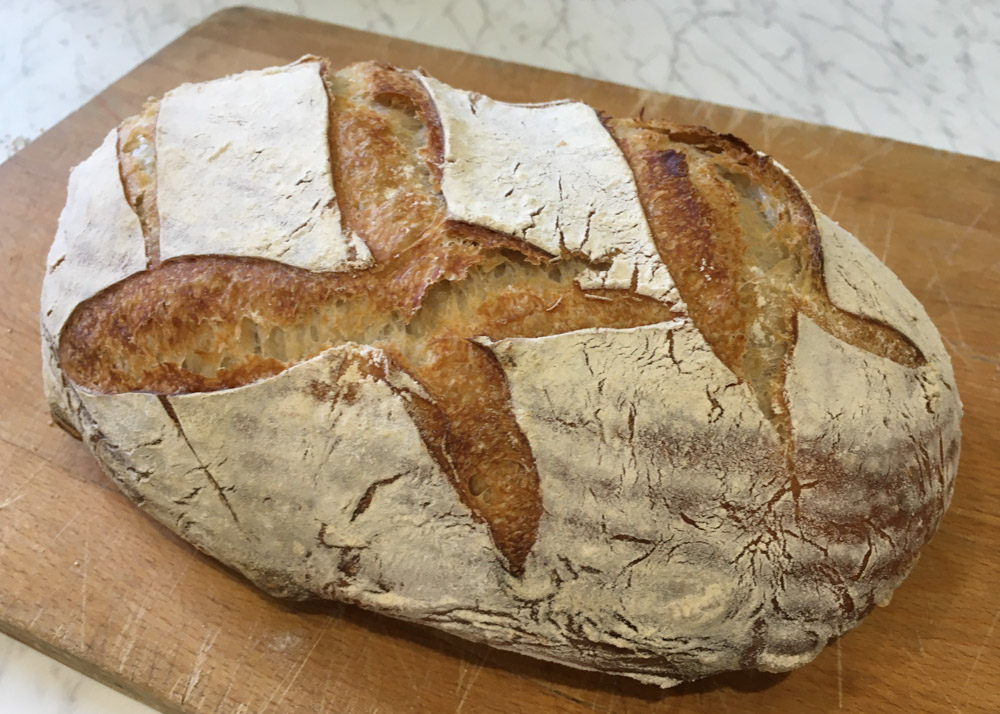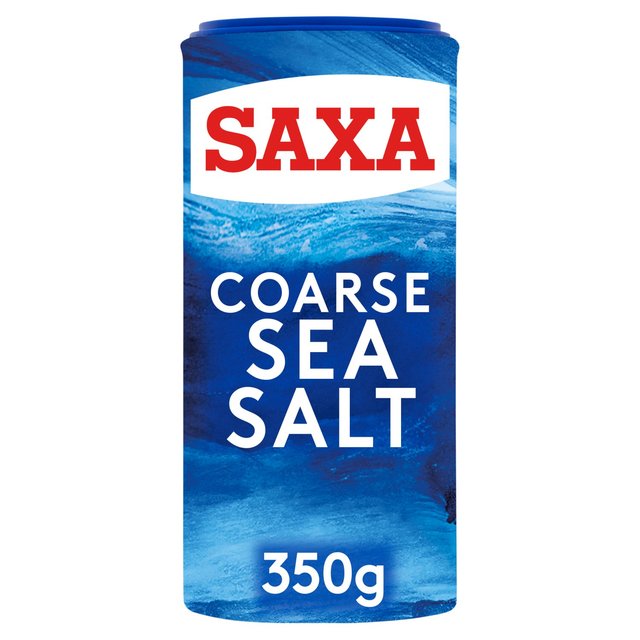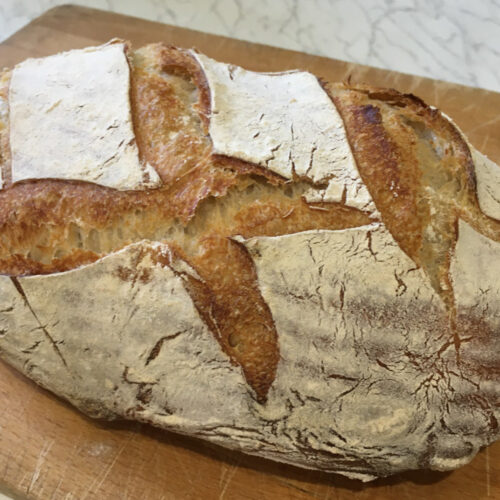The Cheshire Loaf
Flour, salt, water
Bread has 3 basic ingredients: flour, salt, water. Bread has been baked in England with wheat or barley certainly since Neolithic times. The grains can be grown almost anywhere, water exists wherever people live – or in reverse, people lived where they could get water. There are few places in UK where all the ingredients you need are sourced almost on your doorstep.

Walk Mill Flour
There is something wholesome about getting your flour from somewhere where you can see the wheat being grown before being milled, stone ground before your eyes, packed into bags and sacks for you to take home to bake your daily bread. Walk Mill is exactly that.
Salt of the earth
The salt mines below Northwich are now exhausted but not faraway in Winsford we have UK largest salt mine. This salt, however, is used for industrial purposes and not for cooking.
The manufacture of white salt for food and allied industries is now concentrated in Middlewich by British Salt, who sell under the name Saxa. Salt produced by British Salt in Middlewich has 57% of the UK market for salt used in cooking.
The Lion Salt Works, established in the late 19th century, was part of the booming salt industry in Cheshire. The saltworks utilised brine pumped from underground salt deposits, extracting the salt through processes such as evaporation and crystallisation. The brine was obtained from natural brine springs or from brine wells specifically drilled for salt extraction. Today, it is a museum where you can learn of the history of salt production.
So does Cheshire produced salt come from Cheshire. Probably not. UK imports rock salt and sea salt from all over the world.

Cheshire water
Cheshire gets its water from rivers, reservoirs, groundwater, and sometimes imports from other areas. While there are several reservoirs in Cheshire, these are mainly supplying water to areas around Macclesfield. Cheshire houses are more likely to be drinking water from Wales though water is taken from River Dane and the River Croco


White Sourdough Loaf (no knead)
Equipment
- large mixing bowl
- dough whisk or fork and spatula
- banneton 18 to 22 cm wide
- Cloche if you have one If not a then just use a baking tray. The baking instruction will differ (stage D)
Ingredients
For the leaven
- 100 g white flour sourdough starter
- 50 g strong white flour
- 50 ml lukewarm water
For the Dough
- 200 ml lukewarm water
- 400 g strong white flour
- 10 g salt
- more flour for work surface and dusting
Instructions
A Set the leaven
- Put the sourdough starter in the mixing bowl and add the 50ml water. Use a dough whisk (or forks) to mix the starter into the water.
- Add the flour and whisk again. Cover with a cloth and leave for 4 hours.
B The Autolyse
- Add the 200ml lukewarm water to the leaven and mix the leaven with the dough whisk (or fork).
- Add the flour and then mix with spatula until the flour and water are combined. Cover the bowl with a cloth and leave to rest for 1 hour.
C Proofing
- Salt: Sprinkle the salt on the surface of the dough. Wet you handwith cold water. Squeeze your hand through the dough 4 or 5 times. Leave covered with cloth for 1 hour.
- Stretch and fold: Again with wet hands, pull the dough from underneath, stretching and folding over the top. Turn the bowl 180º and repeat. Turn the bowl another quarter of a turn and repeat the stretching of the dough from underneath to top, and finally turn the bowl 180º and repeat. This tightens the dough and you will feel the dough become more difficult to stretch. You may choose to turn and stretch twice more depending on the feel of the dough. Leave covered for 1 hour.
- Repeat this stretching and folding each hour, 2 more times.
D Baking
- In the morning, take the dough out of the fridge and heat the oven to 220ºC
- In the instructions that follow, you need to use a sharp blade to make some slashes in the surface of the dough. This is not just for decoration. The slashes in the surface enable the bread to rise. Depending on how tight your dough is at this point, some slash patterns could weaken the strength of the shape. This would make the loaf spread (so appearing to rise less) during baking. It will still taste fine and it does not affect the texture. 3 parallel slashes would be a safe option.
Cloche baking
- Put the cloche inside the oven while it is heating up. Leave the cloche to heat up thoroughly - at least 20 minutes from when the oven has reached temperature
- Take the cloche out of the oven, remove the lid and tip the dough, by quickly turning the banneton/bowl up side down into the base of the cloche.
- Use a lame to slash your desired pattern into the surface of the dough and replace the cloche lid and return to the oven.
- Bake for 12 minutes then turn down the temperature to 200C and continue for a further 25 minutes. Remove the lid of the cloche and bake for a further 8 minutes
Baking Tray
- Put a baking dish full of water in the bottom of the oven while it is heating up.
- Tip the dough on to baking tray by quickly turning the banneton/bowl up side down. Use a lame to slash your desired pattern into the surface of the dough and put the baking tray in the oven.
- Bake for 12 minutes then turn down the temperature to 200C and continue for a further 33 minutes.
